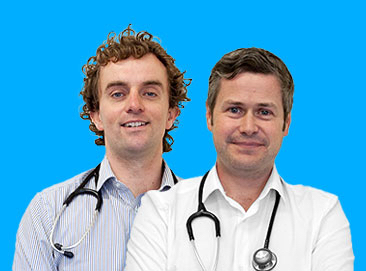With resident doctors agreeing to the Government’s offer to resolve the strike action, back pay and pay uplifts are now coming through in resident doctors’ November payslips. While it is great to get extra income, there may be some (perhaps severe) tax consequences of receiving this backpay. In this blog, Ed goes through how the backpay may change your tax position.
Introduction and some practical points
The offer increases pay for 2023/24 and 2024/25 resulting in a 22.3% average pay uplift over the two years according to the BMA. As the pay increase starts from April 2023, i.e. the offer is backdated, resident doctors working since then will receive backpay and this is being included in November payslips. If you have changed employers since April 2023 you will receive back pay from each of your employers for the period in which you were working for them. Depending on the number of employers you had between April 2023 and November 2024 you may therefore receive several payments and payslips. These will show “Basic Pay Arrs” (i.e. arrears) and potentially “Night Duty Arrs” and “Weekend Arrs” depending on the role. Two examples are shown below:
From a practical perspective:
- For your previous employers, do you have access to the ESR for that employer? If not, hopefully you will receive a payslip via post or email but if you receive nothing then contact your old payroll department so that you have this for your records. We know that our friends have been struggling to get some of their payslips however!
- It is up to your employer(s) to action the back pay payments but note that if you have changed employer and since you worked for them have changed bank account details you should let them know to ensure you get the pay you are entitled to.
What medical school didn’t teach us about money
“What medical school didn’t teach us about money” will give doctors a step by step plan to transforming your financial future. Enter your details to download your copy now

Income Tax Consequences
Again, not dismissing the fact that getting extra income is very nice, there may be some unintended consequences when it comes to tax and it is important to be aware of these.
Will you fall into the 60% tax trap?
Firstly, will this push your adjusted net income for the tax year above £100,000? Adjusted net income is basically your taxable income (this should be all sources of income including salary less NHS pension, trading profits, bank interest, dividends, rental profits etc., less tax reliefs such as employment expenses and trading losses; ignore sources of income that are not taxable such as income from an ISA) with some adjustments made – mainly deductions for Gift Aid charitable donations and private pensions.
If your adjusted net income goes above £100,000 you will start to lose your tax-free personal allowance by £1 for every £2 you go above £100,000. By £125,140 your entire personal allowance will be removed. In the threshold between £100,000 and £125,140 note that your marginal tax rate will be 60% (because not only will you pay tax at 40% you lose that personal allowance).
If you are on our Financial Wellbeing Course, don’t forget to use our adjusted net income calculator to work out your adjusted net income and follow the tips for reducing your adjusted net income where possible.
Will the backpay impact your tax-free childcare?
If your adjusted net income goes over £100,000, even by only £1, you lose access to the tax-free childcare scheme (worth £2,000 a year per child) and the 15 or 30 free childcare hours as well which can be pretty costly.
Has your tax code changed?
Tax codes are codes (hence the name!) that usually come as a combination of a number and then a letter(s). The code is sent by HMRC to the relevant payroll department and cannot be changed by payroll – only HMRC can change your tax code. It is not uncommon for doctors to be put on the wrong code by HMRC, so check your tax code on each payslip. You may see one of the “emergency tax codes” which may or may not be incorrect.
Some common emergency tax codes include:
- D0 where HMRC do not give you any personal allowance and assume all your income should be taxed at 40% (less likely you may see D1 where they assume all your income should be taxed at 45%). If you get a lump sum backpay amount from a former employer with a D0 tax code and you are a 40% taxpayer then this is likely to be correct – you pay tax at 40% and D0 takes 40% off so you should be fine.
- BR where HMRC do not give you any personal allowance and tax everything at 20%. Unless you are a basic rate taxpayer this is unlikely to be correct and you might owe tax if you’re actually a 40% taxpayer.
- 0T where HMRC take away your personal allowance and then tax your income at the income tax rates of 20%, 40% and 45% using the income tax thresholds. If this is on your current employer payslip this may be incorrect if you are owed a personal allowance (i.e. your adjusted net income does not exceed £125,140). Even if you are not due your personal allowance, often doctors get tax relief on their allowable employment expenses through their tax code so check you are still getting tax relief for these. Also, if you are a 40% taxpayer and you get a lump sum from an old employer with a 0T tax code, are you underpaying tax if a large part is taxed at 20%?
Your tax code may change from “CUMU” to “NONCUM” (sometimes instead of saying “NONCUM” you get an “M” at the end of the tax code instead – these are the same thing). A change to a “NONCUM” tax code does not necessarily mean an issue – it means that HMRC are calculating your income tax for the month with no reference to tax paid previously (essentially, they take one-twelfth of your personal allowance / basic rate band etc). A cumulative tax code works out your tax taking into your account what you have already paid in the tax year so far and is mainly useful for people who do not work the whole of the tax year.
Even if the tax code on your main payslip is OK, make sure you check this is still the case in December as HMRC may well get confused by the multiple payslips you received in November and think you now have more than one job going forward (the issue that a lot of doctors get in September after switching trusts in August and getting two payslips for that month).
Join 30,000 doctors and receive free, exclusive, financial CPD for doctors in your inbox.
Medics’ Money is run by doctors and finance experts, for doctors. Our free financial CPD gives you all the knowledge you need to take control of your finances.

Pension Tax Consequences
Have you moved into a new pension contribution tier?
Up to 40 hours of basic pay is pensionable so you may find that some or all of the basic pay backpay is pensionable (any weekend or night shift arrears should not be pensionable). Moreover, note that your pensionable earnings may cross into a new contribution tier – if it does then all your pensionable earnings will be subject to this new contribution rate.
The current thresholds and rates are:
| Pensionable earnings thresholds | Contribution rate |
| Up to £13,246 | 5.2% |
| £13,247 to £25,146 | 6.5% |
| £25,147 to £30,638 | 8.3% |
| £30,639 to £45,996 | 9.8% |
| £45,997 to £58,972 | 10.7% |
| £58,973 and above | 12.5% |
So, for example, if your pensionable earnings were £58,000 you would have a contribution rate of 10.7% (pension contributions would be £6,206). If you get basic pay arrears of £5,000 and your pensionable earnings are now £63,000 then that extra £5,000 will tip you into the new contribution tier and your pension contribution payment will be £7,875 (i.e. 12.5% on £63,000).
Are you now going to get an Annual Allowance charge?
For some it may create an issue regarding the annual allowance creating an annual allowance charge. Annual allowance tax charges are levied when the calculation of your pension growth exceeds £60,000 per annum. Whilst this is a high allowance large uplifts in pay can create large growth calculations. That said you can use up any unused allowance from previous years so most resident doctors will hopefully not be caught by this.
Summary
Not everyone will have issues with the receipt of backpay and many won’t have any issues at all. As we said, it is always nice to get extra income. But some people will be affected by one or more of the above issues and, as always, it is important to be aware of your finances and how you are affected.








